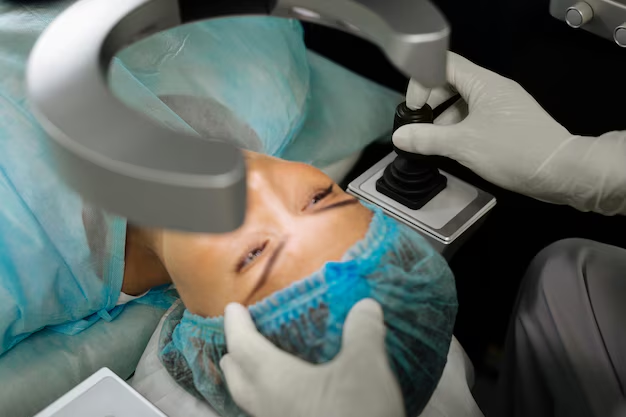Understanding Cataracts: How They Form and What You Need to Know
Visual clarity is something most people take for granted—until it becomes compromised. One of the most common causes of vision impairment as people age is cataracts. Perhaps you’ve heard about them or even know someone affected by them, but how exactly do they form? In this article, we'll explore the intricate process of cataract formation, delve into the factors that contribute to their development, and discuss what you can do if you suspect you're affected.
🌟 What Exactly Are Cataracts?
Imagine trying to look through a fogged-up window on a rainy day. This is somewhat akin to what individuals with cataracts experience. A cataract occurs when the clear lens of the eye becomes cloudy, leading to decreased vision. This lens, behind the iris and the pupil, helps focus light onto the retina for sharp images. A clear lens is crucial for vision, so when it clouds over, the clarity of sight diminishes.
🌞 The Formation Process: From Clear to Cloudy
Cataract formation is generally a slow process and can vary greatly from person to person. Understanding how they form starts with understanding the natural aging process.
🔬 Changes in the Lens
Inside the lens are proteins and water, which are arranged in a precise order to keep the lens clear and let light pass through. As we age, some of these proteins can start to clump together, creating small areas of cloudiness. Over time, this cloudiness can grow and affect more of the lens, leading to the vision become blurred or dulled.
🔗 Contributing Factors
While the clouding usually happens as one ages, several factors can accelerate this process:
- Ultraviolet Light: Prolonged exposure to UV rays can hasten cataract development.
- Medical Conditions: Conditions such as diabetes are linked to an increased risk.
- Lifestyle Choices: Smoking and excessive alcohol use can be contributing factors.
- Medications: Long-term use of certain medications, like corticosteroids, might play a role.
- Genetics: A family history of cataracts can increase susceptibility.
🩺 Is It a Cataract? Recognizing the Signs
Identifying the early signs of cataracts can be key to managing their impact on vision. Here are a few common symptoms:
- Blurred or double vision
- Difficulty seeing at night
- Increased sensitivity to glare
- Colors appearing faded
- Frequent changes in prescription glasses
If you notice these symptoms, it’s advisable to seek an evaluation from an eye care professional. Early detection can aid in better management and monitoring of the condition.
🏥 How Cataracts Are Diagnosed
Cataracts are typically diagnosed through a comprehensive eye examination. This exam might include:
- Visual Acuity Test: Measures how well you can read a series of letters.
- Slit-Lamp Examination: Provides a magnified view of the structures at the front of your eye.
- Retinal Exam: After dilating the pupils, the retina is examined for signs of cataract development.
🌿 Living with Cataracts: Lifestyle and Management
Even if cataracts are diagnosed, there are ways to manage them and live a fulfilling life. Here are some strategies:
- Wearing Sunglasses: Protects eyes from UV rays, slowing cataract progression.
- Healthy Diet: Nutrient-rich foods, particularly those high in antioxidants, support eye health.
- Regular Check-Ups: Frequent follow-ups allow for the monitoring of cataracts.
- Adjust Lighting: Optimize your living space to reduce glare and improve contrast.
⚙️ Cataract Surgery: When Is It Necessary?
Surgery is the most effective way to treat cataracts, especially when they start to interfere significantly with daily activities. During the procedure, the cloudy lens is removed and replaced with an artificial one. Cataract surgery is considered safe and is one of the most common procedures performed worldwide.
🙌 What to Expect
- Pre-Surgery Evaluation: Eye measurements are taken to determine the appropriate lens power.
- Surgical Procedure: Typically an outpatient procedure, where local anesthesia is used.
- Recovery: Most individuals experience improved vision within days, though complete healing can take a few weeks.
👀 Key Takeaways
Ready for a quick recap without peeling your eyes from this article? Here's a convenient bullet-point summary, enhanced with emojis for visual appeal:
- 🌤️ Stay UV Conscious: Always wear sunglasses to protect against harmful rays.
- 🥦 Nutrition Matters: Include leafy greens and colorful fruits for eye health.
- 📅 Routine Check-Ups: Regular eye exams help catch cataracts early.
- 🛡️ Lifestyle Choices: Cut back on smoking and limit alcohol for general well-being.
- 💊 Manage Medical Conditions: Keep conditions like diabetes under control to slow progression.
- 🏥 Consider Surgery: If cataracts impair daily life, surgery is a safe and effective option.
📚 Bringing It All Together
Cataracts might sound daunting, but understanding their formation and progression empowers you to make informed decisions about your eye health. While they are a natural part of aging for many, taking proactive measures now can enhance your quality of life and preserve the clarity of your vision.
In acknowledging the role of professional advice, remember that if you suspect cataracts, an eye exam is the first step toward clarity. As you navigate through this journey, let knowledge and preventive measures guide you towards maintaining a crystal-clear outlook on life.
